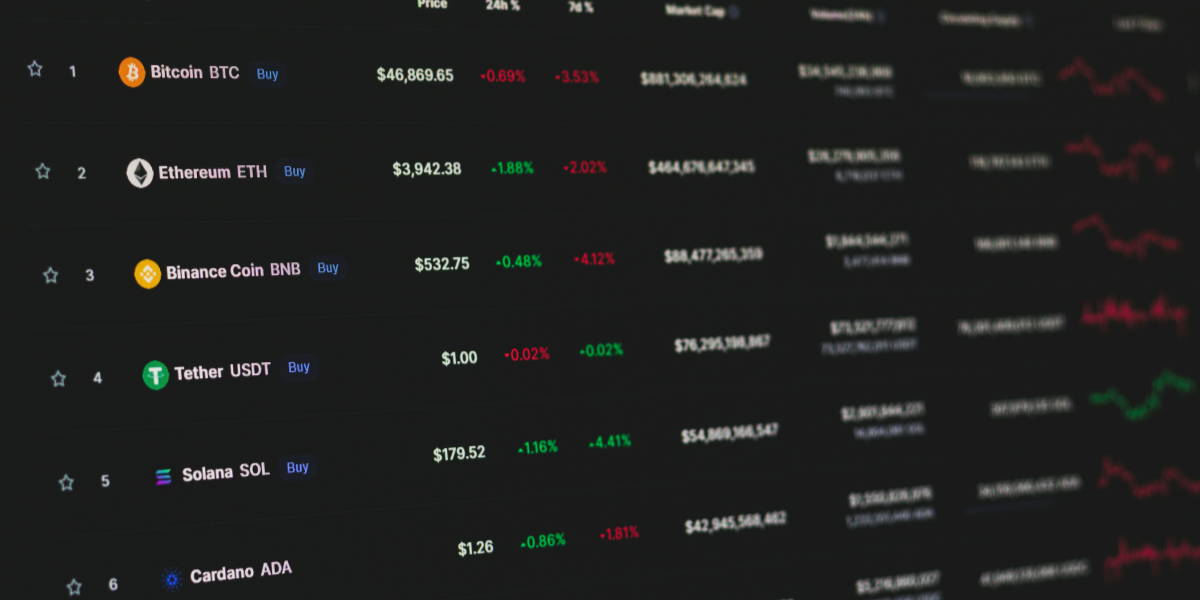TradingView is a sophisticated charting platform that caters to many financial markets. The software provides rich price data for cryptocurrencies and several analytical features, like sentiment tools. But what is sentiment? And how is it used to gauge crypto market trends?
What Is Sentiment in Crypto?

Sentiment in crypto refers to traders’ or investors’ opinions, emotions, and attitudes. These may be directed towards the overall market or at a particular coin. Sentiment in digital currencies is more prominent than that in other assets like forex and stocks, and it is less influenced by social pressure and hype.
The crypto market is still relatively new and experimental. Thus, it’s more speculative, attracting all traders and investors. Meme coins like Dogecoin can produce double-digit percentage moves in a few hours from a simple tweet by Elon Musk. Hence, knowing the sentiment can offer a leg up in predicting price movements.
Sentiment tools in crypto tools derive their measurements from numerous trading and social sources:
- Volatility: The average volatility levels over a certain period can indicate particular emotions. A rise may suggest that the market is likely to buy, while a decline may imply they are likely to sell.
- Volume and momentum: Similar to volatility, sentiment analyzers consider volume and momentum over a defined period. Higher values indicate a bullish market, while lower values indicate a bearish market.
- Surveys: Public polling platforms hold weekly polls asking thousands of crypto users how they feel about a particular coin or the general market.
- Social media platforms: Telegram, Twitter/X, and Reddit are crypto enthusiasts’ go-to social media platforms. Sentiment analysis would consider specific mentions of a certain coin and common words that imply particular emotions and future actions.
- Google: as with searches on the previously mentioned social media networks, search queries on Google also tell a story. Google Trends offers vital search volume, focusing on a rise in specific queries over others and what they imply sentiment-wise.
Users can consider sentiment analysis from advanced platforms built for this purpose, such as LunarCrush, Santiment, Messari, IntoTheBlock, and Token Metrics.
The Sentiment Tools on TradingView
The sentiment indicators on Trading are all custom-built by dedicated users in its community. While this offers a wide variety, choosing the best tool becomes challenging. Often, traders will find several versions of the same type of sentiment indicator.
Thus, one must explore the options that provide the most optimal results based on their analysis and experience.
Below are some of the sentiment tools you can use on TradingView.
Crypto Fear & Greed Index
The Fear & Greed Index is a popular sentiment tool used in many traded assets and is the most consistently accurate in cryptocurrencies. It uses the concepts of fear and greed to determine sentiment.
Fear represents a sign of worried investors, meaning a buying opportunity. On the other hand, greed indicates a sign of greedy investors, likely resulting in selling opportunities.
While the index is heavily weighted on Bitcoin, it’s a relatively accurate outlook on the entire crypto market. After all, most coins follow the price of Bitcoin at any given time. Also, most sentiment tools in crypto rely on Bitcoin.
The index represents the sentiment using a 0–100 scale. Readings from 0 to 50 imply fear (0–25 being extreme fear); 50 is neutral; readings between 50 and 100 show greed (75–100 is extreme greed).
Bitcoin Leverage Sentiment
This sentiment indicator focuses on sentiment analysis through Bitcoin leveraged positions in crypto futures. The latter is a market where individual and large players (institutions) speculate on the future prices of different coins with expiry times.
This sentiment indicator uses Z-score analysis to compare leveraged long and short positions. It inputs this data on an oscillating graph, helping traders spot potential reversals or trend continuation.
BTC Twitter Sentiment
This sentiment tool considers Bitcoin-related tweets (in conjunction with tweets mentioning other popularly traded coins) from IntoTheBlock. It presents this information in red (negative), white (neutral) and green (positive) colors. The objective is to see whether there are primarily negative, positive, or neutral mentions of Bitcoin on X (formerly Twitter).
Using Sentiment Tools on TradingView
It’s always best to view a basic tutorial or explainer on each sentiment tool before applying it on the TradingView app. To apply an indicator on the software:
- Once you have logged in, open a chart.
- Click the ‘Indicators’ tab at the top of your screen.
- Search for the full name of the indicator and click on it to apply it to your chart.
Unlike technical indicators, traders should avoid using sentiment to derive buying or selling signals (although a few are more technical, like the Bitcoin Leverage Sentiment tool). Sentiment analysis provides observations on the market’s feelings and the optimal bias to consider.
Traders can match their sentiment findings with their technical and fundamental analysis, ensuring that each sings the same tune before pressing the buy or sell button.
Sentiment Remains Crucial in Understanding Crypto Trends

Most traders gravitate toward technical and fundamental analysis, leaving sentiment analysis by the wayside. Yet, the latter holds far more significance in the wild, speculative crypto market. TradingView is a competent platform for users to apply their sentiment analysis along with other charting and fundamental skills. This multi-fold approach is how traders can make the best possible trading decisions.


 Tags:
Tags:










